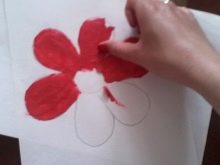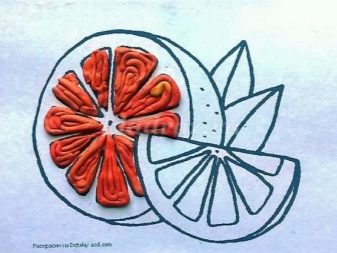Plasticinography for children 6-7 years old

Plasticineography for children 6-7 years old can be very diverse. You need to know how to sculpt pictures of animals and parachutists. It is also interesting to find out how other figures are drawn on cardboard using this technique.


How to draw animals?
A non-standard drawing technique implies a very careful study of all the nuances. Plasticine paintings can meet the highest expectations of interested people. But before you get down to business, you need to carefully study its technical nuances. Before completing a complex plot, you must master:
- rolling colored balls and flagella;
- flattening and smearing of paints;
- certain knowledge about the depicted objects (in our case, these are representatives of the fauna).



The possession of plasticine can be mastered by children already at the age of 3-4 years. But it is by the age of 6-7 that the optimal level of skills is achieved. Much depends on the specific image. A good option for beginners is the Bear Cub craft. She will enhance creativity and develop artistic imagination. In addition to plasticine and stacks, you will need a disc and wet wipes to work.
Sequence of steps:
- cutting out a template;
- putting it on disk;
- marking the contour with a felt-tip pen;
- sculpting of legs (based on dark brown material);
- flattening these blanks and giving them the desired configuration;
- preparation of the heels of the bear (they need a light brown material);
- placing 3 balls in the lower part of the template (in the intervals of the legs);
- sequential pressing of the balls with the index finger;
- smearing 4 more balls on top of them;
- modeling of the upper legs and the formation of claws on them;
- closing the rest of the template;
- sculpting the chest of a bear cub;
- preparation of the ears of the animal;
- light brown plasticine outlining the head contour;
- preparation of the base of the eyes;
- the formation of the muzzle;
- decoration of crafts (for example, you can give him a balloon in one paw).






You can draw with plasticine and a small horse... As in the previous case, it is recommended to draw a diagram and prepare multi-colored plasticine balls. The background is formed from the blue and white mass at the top. It is advisable to use green and brown colors in the lower plane of the cardboard sheet. After mixing the plasticine, it is evenly smeared.
The next steps:
- filling the contour with balls that need to be pressed down a little and slightly overlapped;
- making a bridle;
- peephole execution;
- decoration of the image with the sun, stones, flowers, grass and so on.




Parachutist modeling on cardboard
As much as many people like cartoon characters and fairy-tale characters, sometimes it is useful to sculpt a number of other figures. The image of parachutists allows you to practice the skills of plasticine painting, to raise them to a qualitatively new level. Children mastering such a plot will learn to adjust the position of the figurine, thereby conveying the peculiarity of the movement. You will also have to master the image of proportional body parts.
Important nuances:
- the whole basis for the image must be ready in advance;
- parachutes are formed from colored paper;
- using a roller, you need to sculpt a parachute jumpsuit;
- only in the last part they work over the head, face and arms, hair of the figure.


More ideas
There are many other plasticine options for children 6-7 years old. It is quite possible, for example, to prepare a still life with a fruity plot... First of all, grapes are depicted, because it is simple and suitable for acquaintance with the tactics of plasticineography. Start by mixing purple and raspberry colors. "Sausages" will have to be rolled out of plasticine.
Later:
- "Sausages" are rolled into spirals;
- attach them to the berries;
- carry out blanks of leaves from green plasticine of different saturation;
- circle the leaves along the contour;
- berries near the leaves increase in volume in order to visually isolate them;
- make out the frame.




Getting oranges is done using a template and plasticine of suitable tones.
Roll up "sausages". Then the inside of the orange is performed. With the help of a stack, triangular "sausages" are pushed apart and trimmed. The veins separating the orange triangles are made into white material.
After that:
- form the center;
- circle the edge;
- form a border;
- achieve the color distinction of the edge of the orange (with the help of laying out orange-red "sausages");
- make slices;
- fill the leaves with green mass;
- form a table on which the fruits lie.




Plasticine can also draw:
- snowman;
- figure skater;
- chicken in the nest;
- duck brood in a lake surrounded by vegetation;
- a goldfish against the background of sea waves;
- various types of wildflowers;
- fish in the underwater kingdom;
- stylized turtle;
- a bear cub trying to get into the nest for honey;
- a frame from the popular cartoon "Masha and the Bear";
- tree with colorful leaves (autumn landscape).




See below for more details.



